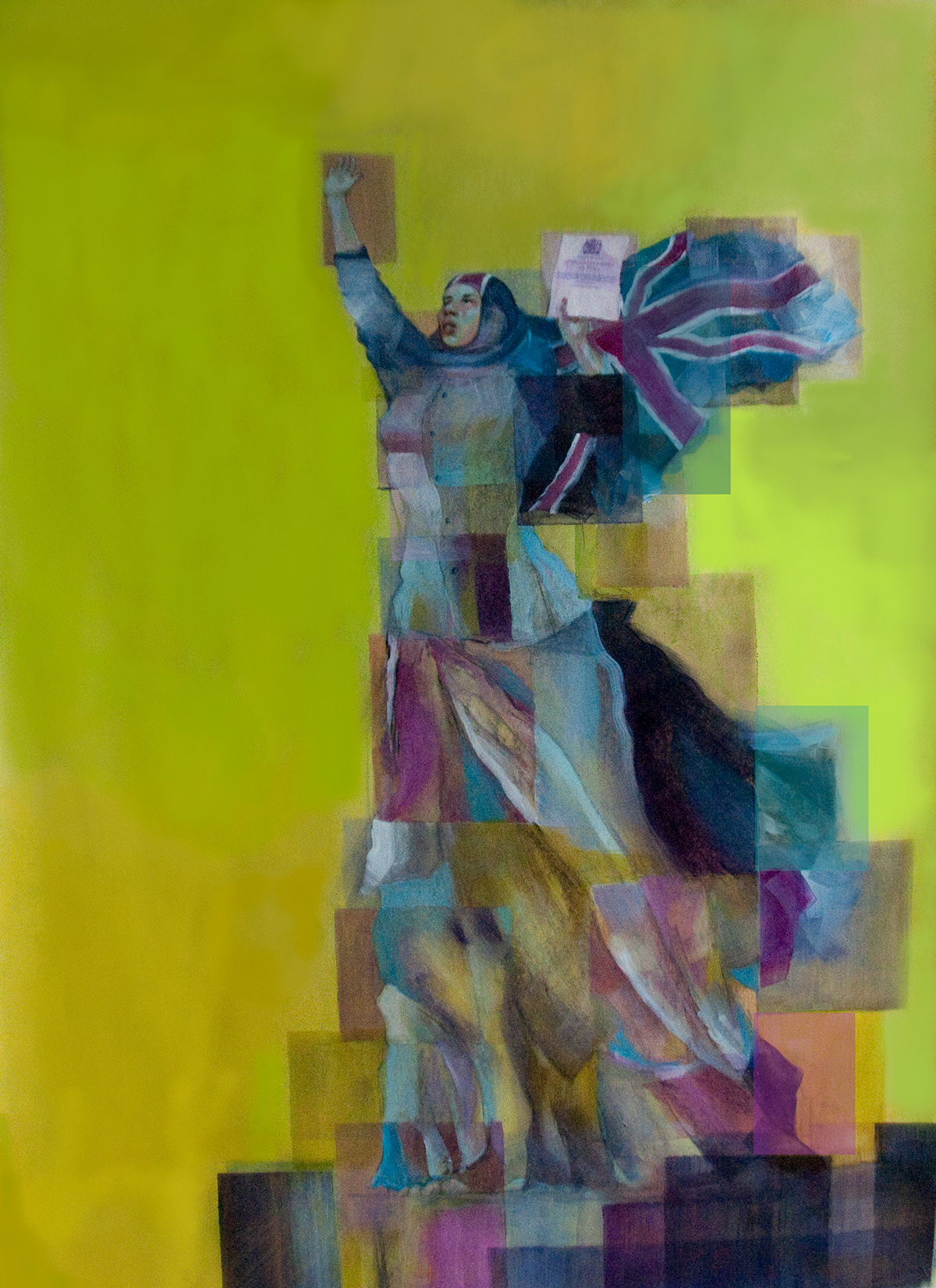A lot of my recent work reflects everyday encounters with the delights and absurdities of the mundane and the familiar. As the writer Georges Perec nicely puts it, it’s all about seeing the unremarkable and what happens when nothing is happening. I spend far too many hours than are good for me wandering urban ‘edgelands” and nameless bits of nowhere in suburbs and suburbia. The resulting art I like to see as a re-enchantment of the ordinary world around us.
Westbourne Grove: A Portrait of Everyday (2012) is the latest in this body of work. It's is a digital painting in diptych form (each panel measuring 2’ x 8’). The numerous characters in the work are people I passed by over the course of two days walking the street. Caught in street movement, or sitting at cafes or hanging around doing nothing, their poses are ironically more suggestive of paparazzi "celebrity" shots so much a part of 21st century popular culture than of anonymous "ordinary" people.
There's a lot going on visually in this piece. Its not a work you can read at a glance. In this respect, and in the narrow horizontal format, it's reminiscent of Chinese hand scrolls which I've always found fascinating both in terms of narrative content and composition. But the narrative quotidian aspect of the work also follows in the tradition of many European artists going back to Brueghel and Hogarth.
Westbourne Grove makes use of digital collage techniques. I like collage and use it in some form in nearly all my work; partly it's a way of making and assembling images which allows for a constant changing of visual vocabulary to express my day-to-day response to any subject. But partly too I like the way it's an art form with disparate elements, and so defies our obsession with categorising the world, identity and place of the individual.
A related aspect which interests me is the question of identity and place: how where we find ourselves affects our notions, perceptions and assumptions about other people. For me, this is often at the heart of my sudden feelings of dissonance in my encounters with the everyday. It's the glimpse of the ordinary seeming out-of-place, almost absurd, within its daily ordinariness.


A Demographic Mapping of a Corner of Holbeck (2011) acrylic/ink on paper, duct tape, timber battens 650cm x 240cm
This work was originally created as a large 6.5 metre site-specific drawing installation for the 2011 Leeds Fringe festival at Temple Works in Holbeck. The panoramic scene documents the eclectic range of passers by on a corner of Water Lane during one lunchtiome in the summer of 2011. I spend a lot of time in this part of South Leeds, as my studio is just up the road and I'm constantly surprised and intrigued by the variety of people you encounter in this little area of odd juxtapositions of light industrial buildings, Victorian factories and cutting-edge contemporary architecture.

City Centre- Mabgate-Harehills 1300-1500, 30 degrees (2012) watercolour, mixed media
More collision of place and identity. A two mile walk through side streets running parallel to the main thoroughfare into Leeds from the North. Sometimes I'm the only white unveiled woman on the streets the entire way. My mum asked me: Which country was this in, then?

A London Summer of 2012 (2012) 150cm x 80cm, vinyl print banner
This work explores aspects of the 1995 and 2006 legislation conferring extensive commercial protection on the official Olympic sponsors for the games; and the discomfiting paradox of the complete absence of Olympic financial reward or benefit for the hidden small traders in the suburbs of London. The figures and places are drawn from real-life yet wholly anonymous individuals and buildings: suddenly rendered individually visible and centre stage, they now oddly present a universal symbolic aspect.

Veiled Victory (2012) Oil on board, 100cm x 130cm
The work on show at Debut Contemporary examines in more detail notions of identity and striving for acceptance. I wandered the terraces of south Leeds in the summer months of 2012 as the nation celebrated the Jubilee, and encountered a vibrant multicultural celebration of Britishness.
Yet despite the familiarity of the scenes, there was a sense of unexpectedness; displacement from the everyday and ordinary.
Perhaps it was the sight of Sikhs setting up a sound system to blastout “Land of Hope and Glory”. Perhaps it was the dreadlocked guy draped in a plastic Union Jack. Or perhaps the heavily veiled lady trailing a large patriotic flag.
Nothing strange, and yet it gave me pause for thought. My assumptions about what it means to be British and how people feel about their Britishness have been challenged.



